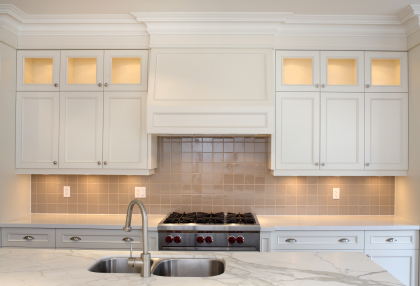Gardeners love to dream of having a greenhouse that will extend the growing season. Seedlings can be started when the spring weather is unpredictable and temperature swings prevent soil from warming sufficiently in the garden plot. Basic greenhouse models offer an affordable starting point for the at-home gardener. There are many “How-To Guides for Greenhouses” available online, but here are some must haves when it comes to building your own!
STANDARD GREENHOUSE ATTRIBUTES
=-=-=-=-=-=-=-=-=-=-=-=-=-=-=-=
Every greenhouse requires the shopper to make some choices that are appropriate for the use and location of the garden greenhouse. Following these initial selections, the gardener can enhance the greenhouse with each passing year.
• Wall material – Double, or triple, thickness of various materials will offer the necessary insulation against heat loss. Gardeners are happiest when the best possible wall composition is selected for the climate. Saving money on this feature could be expensive later.
• Floor composition – Every greenhouse expert has a different opinion about whether the floor should remain dirt, be a poured concrete slab or consist of wood planks, which would allow moisture to run through the boards.
• Size – Advice from current greenhouse owners includes the admonition to “buy large.” An estimate based on current needs will require replacement of the greenhouse in the next two years. During the first spring, the gardener might have unused space inside the greenhouse.
• Location – Gardeners know where the greenhouse will fit within the yard space. Deciduous trees must be considered since the shade in the yard will change as the weather warms in the spring. Observation of the light patterns will provide important information for the gardener’s final placement decision.
ESSENTIAL ELEMENTS FOR THE GREENHOUSE
=-=-=-=-=-=-=-=-=-=-=-=-=-=-=-=-=-=-=
Living conditions inside the greenhouse must be maintained at all times, regardless of the weather events outside. Advanced greenhouse features can be added to make the gardener look like a master gardener through the magic of technology.
• Fans for separate purposes – The air-circulating fan will run constantly to ensure that the air inside the greenhouse will not become stale, or stagnant. A heat-saver fan pulls the warmest air from the top of the greenhouse toward the plants to create an even temperature throughout the living space.
• Solar vent opener – Moderating the temperature is achieved with solar-powered openers on every vent around the greenhouse. As the temperature rises, the vents will open until the fans are able to cool the greenhouse. The setting sun triggers the vents to close and preserve heat through the night.
• Humidity dial – The amount of moisture in the air inside the greenhouse is an important factor in the health of the plants. Monitoring this level is essential for tropical plants inside the greenhouse.
• Soil analyzer – Probes are inserted in the plant soil to provide important information concerning the levels of light, pH content, moisture and soil nutrients. Readings from this analyzer tells the gardener how to adjust light, fertilizer and water.
• Light meter – No batteries are needed for the photovoltaic cell in this sensor. Light intensity throughout the greenhouse can be measured to determine if a plant needs more shade or sun.
• Thermostat – In combination with a moisture resistant heater, the greenhouse thermostat will maintain the optimal climate to support plant life. Vents will be opened, or the heater will run to adjust the temperature if it leaves the set range.
• Start trays and heat mats – Soil temperature inside the greenhouse can be maintained while seeds are germinating. Moisture is held close to the soil by clear lids on each flat to allow the tender shoots to break through the surface. A probe inserted in the soil ensures that the soil is warm, but not too hot.
• Misting system – Automated misting at the proper time throughout the day provides sufficient moisture for young plants. Any gardener who is away all day will have better results when the misting system is available to help the plants in the greenhouse make it through warm spring days.
• Monitoring station – A wireless electronic monitor can be mounted inside the house when the greenhouse is within 300 feet. The radio-controlled clock will maintain perfect time against the U.S. atomic clock. Temperature and humidity readings are received from the sensors inside the greenhouse. Frequent checks of the greenhouse conditions provide peace of mind for the gardener.
ASSEMBLE THE BEST COMBINATION
=-=-=-=-=-=-=-=-=-=-=-=-=-=-=
Gardeners are dreamers of the highest order. Visions of row after row of healthy vegetables and flowers begin each year on the darkest winter days. Plans are drafted for spring projects before the gift wrap is stored away in January. Technology is advancing to support the dreams of perfect greenhouse conditions regardless of spring temperature swings. More information allows the gardener to make adjustments early to prevent loss of plants because certain areas of the greenhouse might be unnoticed through casual observation. A custom combination of these features can be assembled to address the highest priority challenges the gardener faces.
Download the Greenhouse Guide Here!!
Tags: backyard, bathroom remodeling, garden, gardening, greenhouse, home improvement




